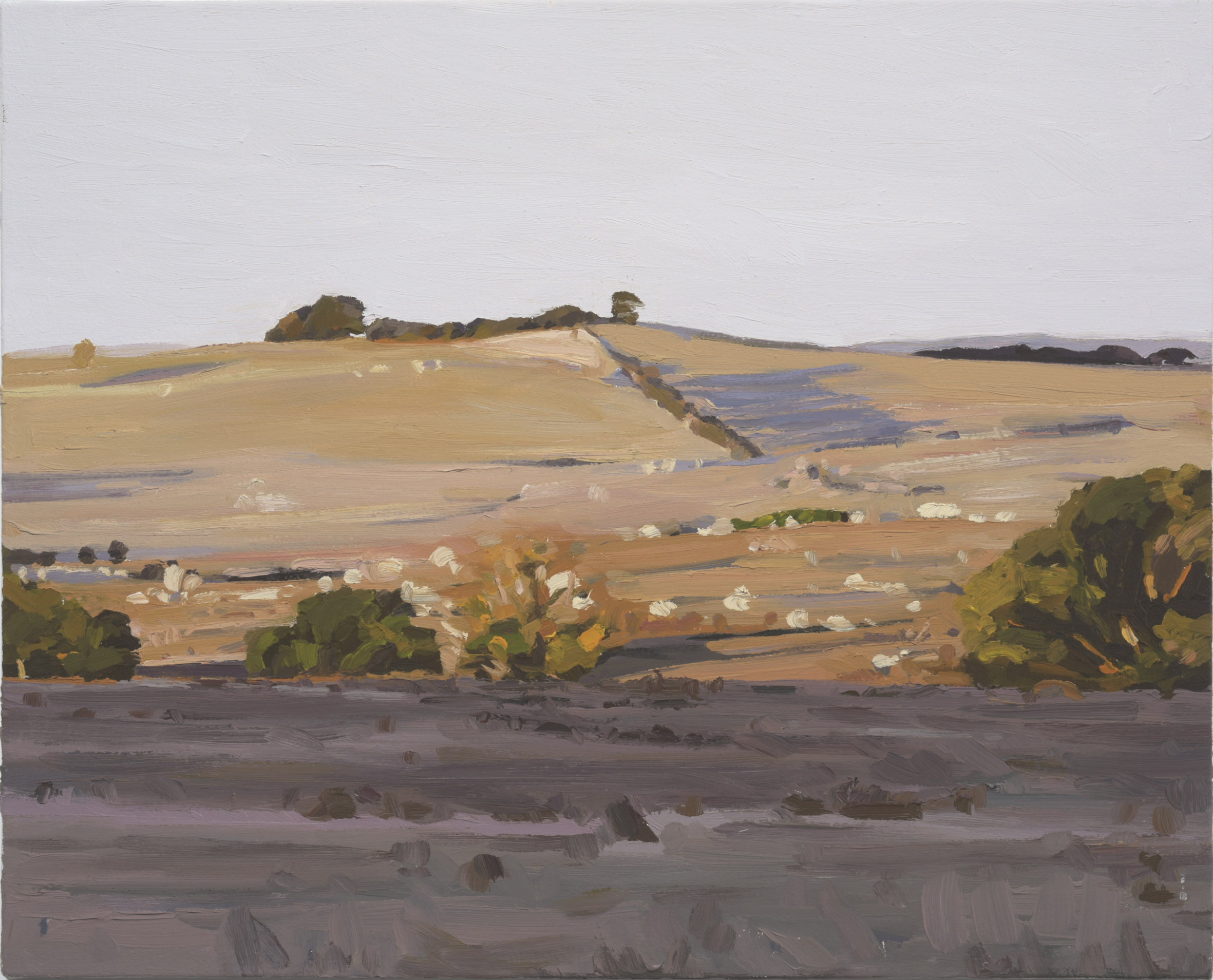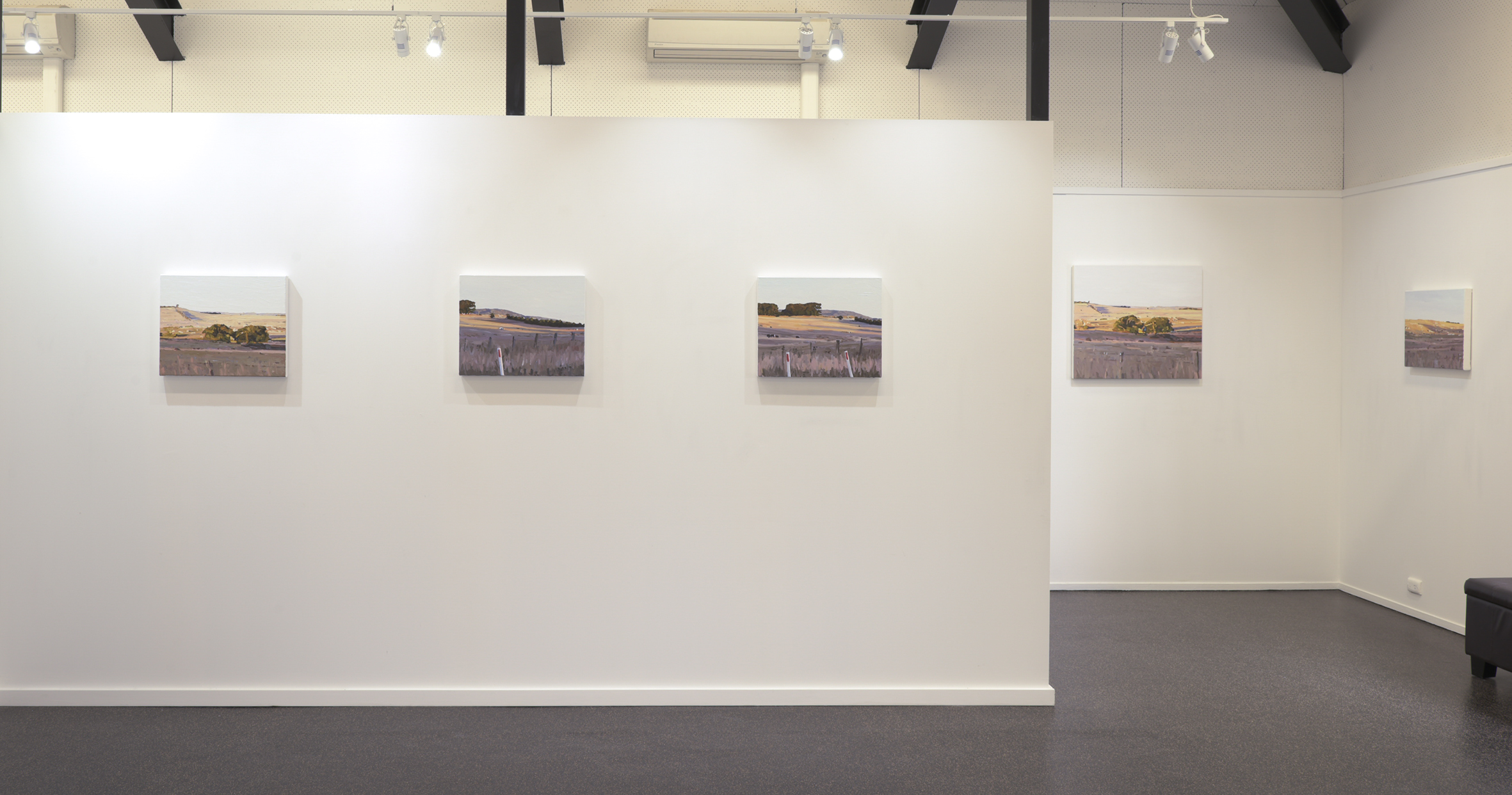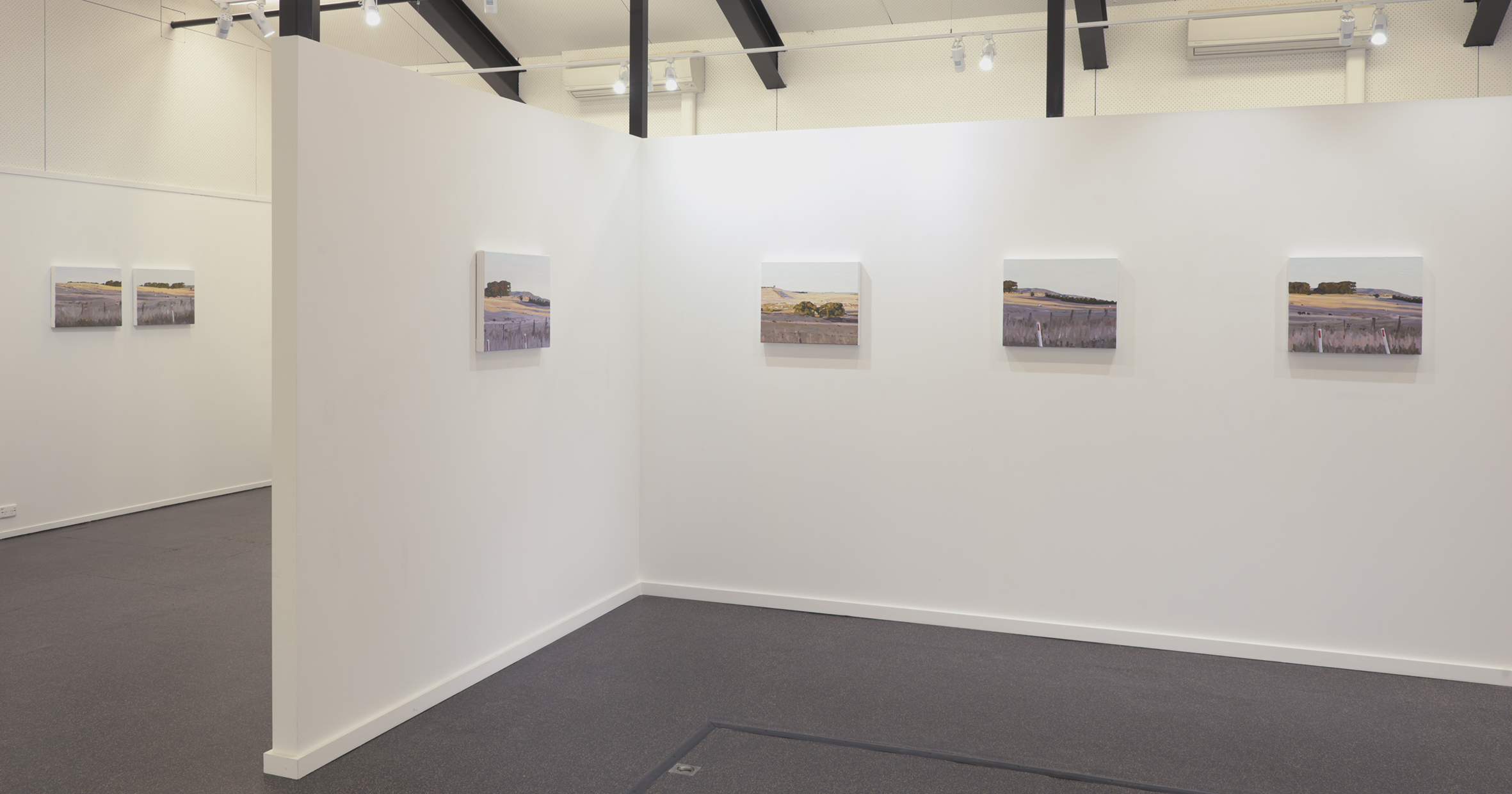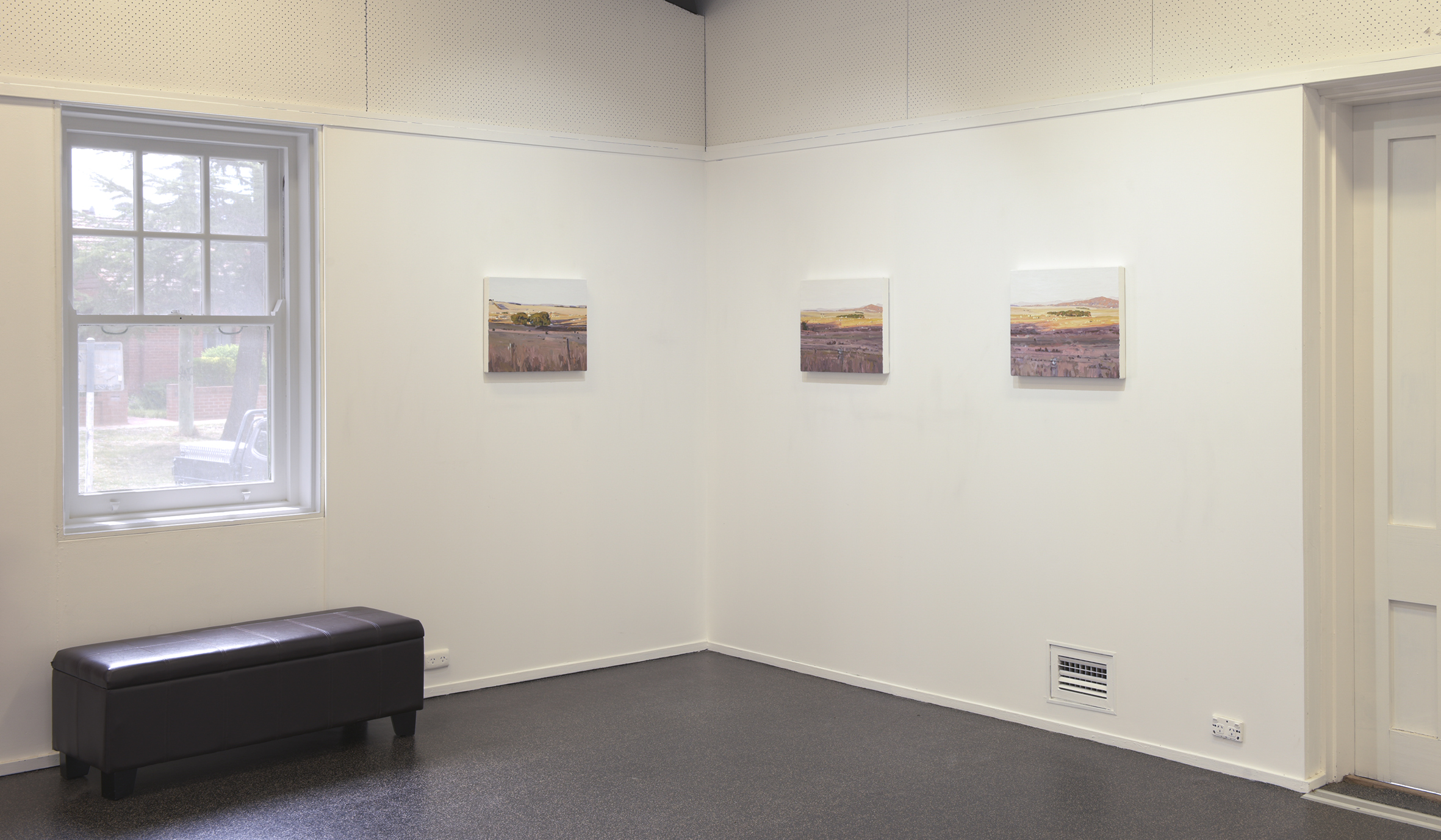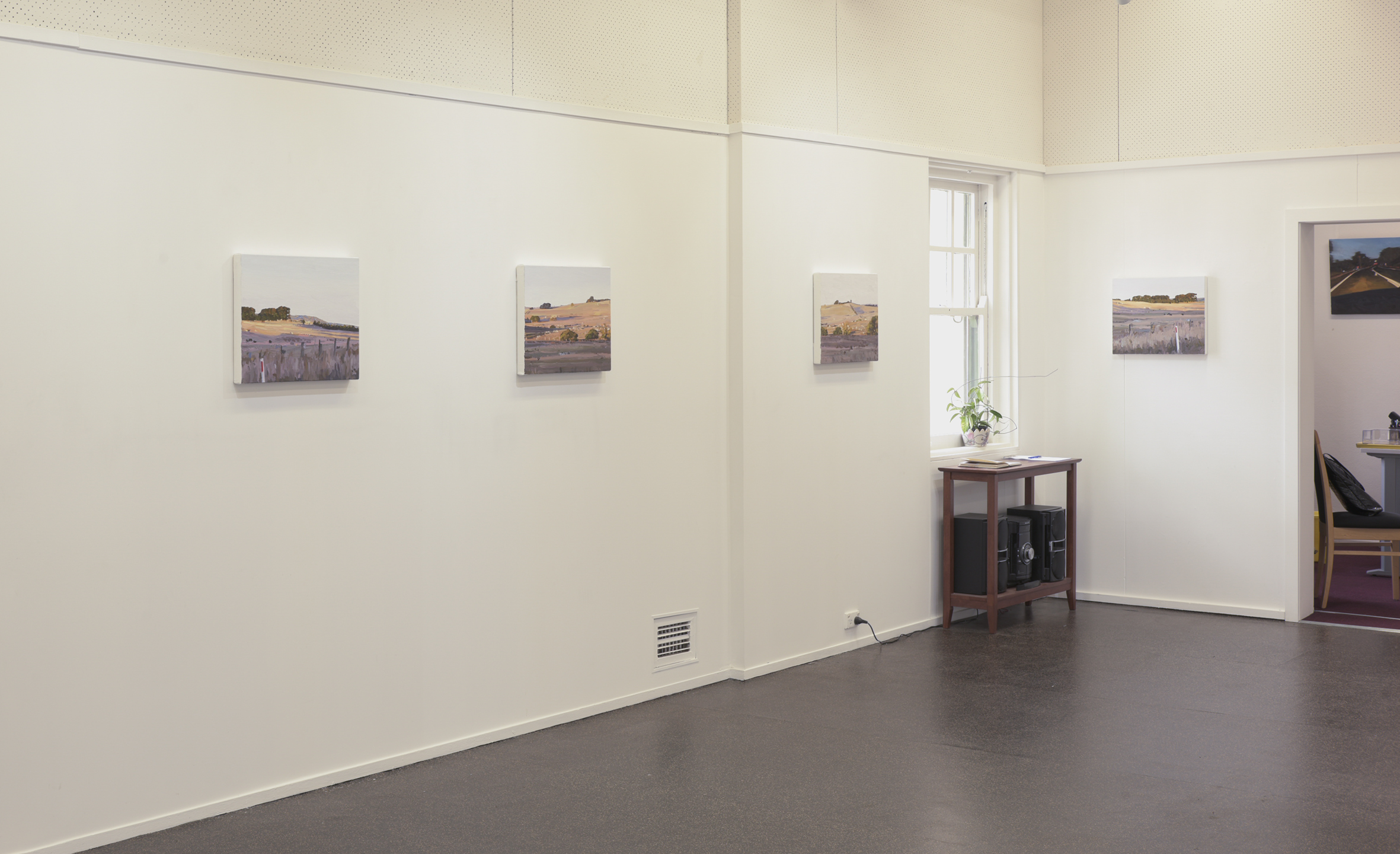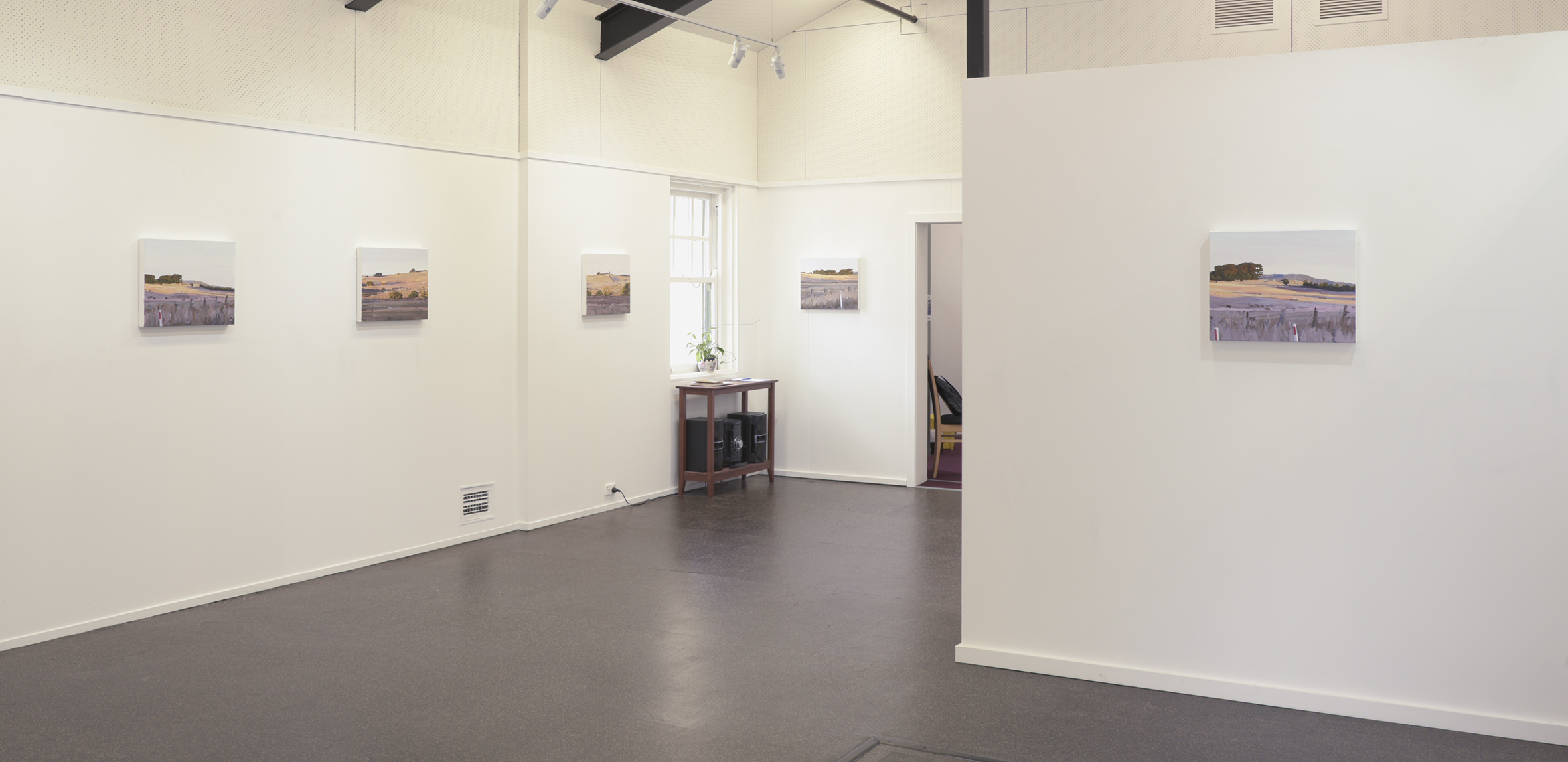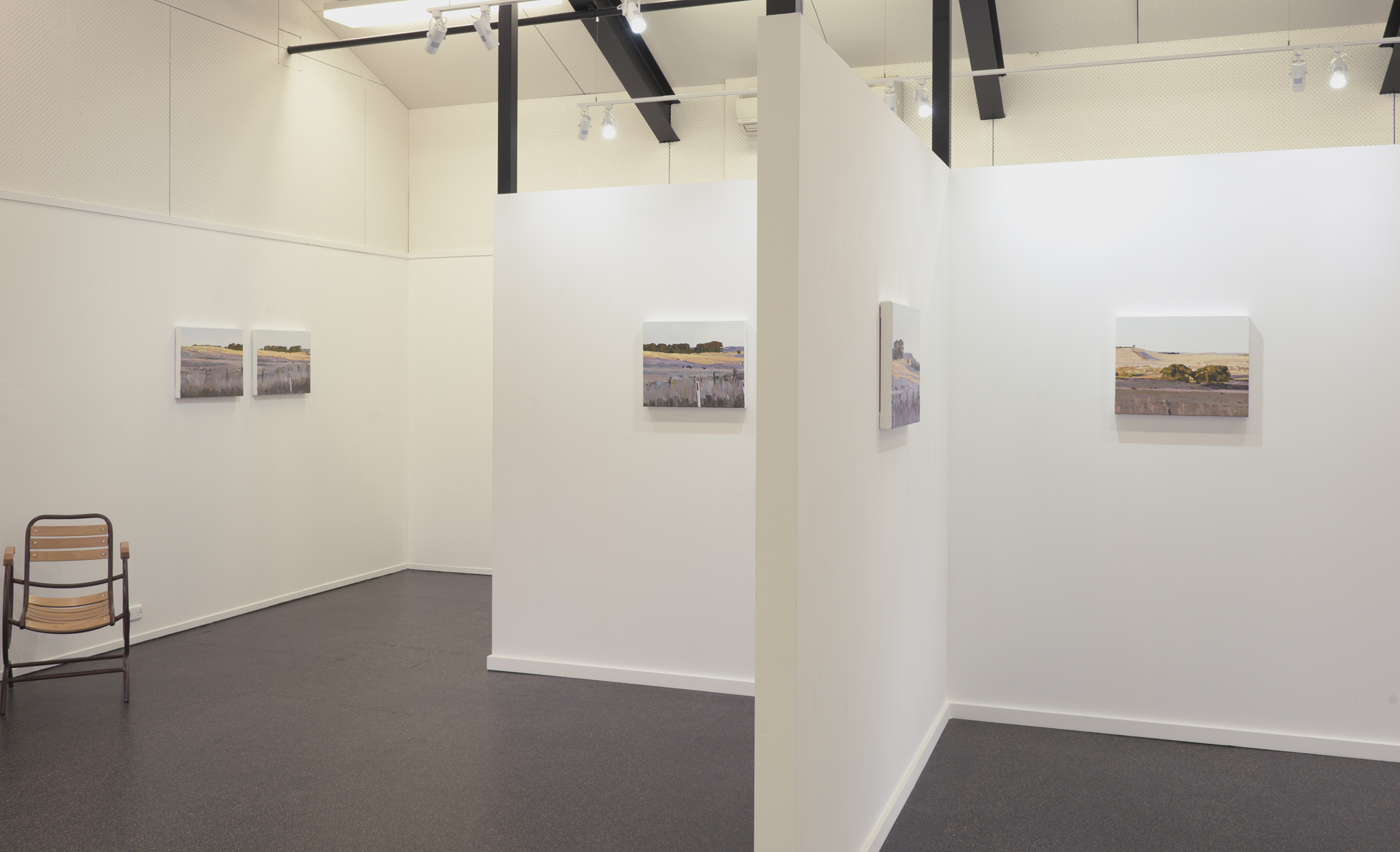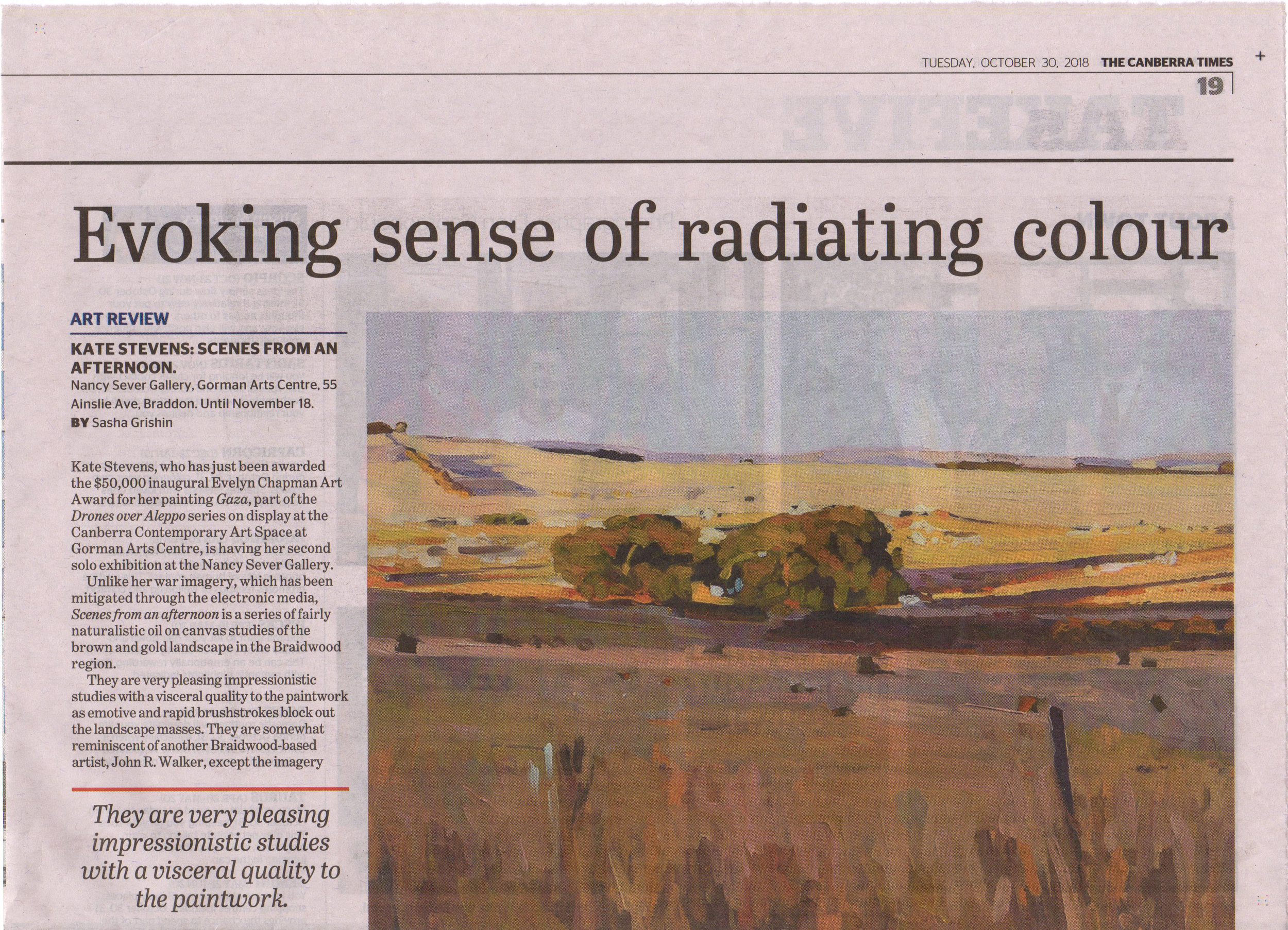KATE STEVENS | SKY BLUE SKY
21 SEPTEMBER - 23 OCTOBER 2016
SKY BLUE SKY
The Nancy Sever Gallery is pleased to present Sky Blue Sky, an exhibition of paintings by Kate Stevens, one of the region’s more gifted artists.
Kate Stevens graduated from the Australian National University’s School of Art in 2001 with a Bachelor of Arts (Visual) with Honours. In 2002 she was awarded an ASOC travelling scholarship to Japan and in 2011 she won the Portia Greach Memorial Painting Prize. She has exhibited in solo shows in Canberra, Sydney, Melbourne and Adelaide.
Sky Blue Sky features a series of paintings that depict landscapes in and around the town of Braidwood, NSW, where the artist currently lives.
“They are loose, painterly reworkings of Iphone footage filmed through the front windscreen or side windows of a car whilst driving - including in the main street at dusk, and down from Mt Jillamatong with a view to the town nestled in paddocks below.” explains the artist. “The paintings have parts of the dashboard, rear view mirrors and even the shadow of the car rushing through the grass on the side of the road as elements obscuring the landscape, and are intentionally sourced through the car windows and phone screen to look at the experience of landscape-‘man in nature’ (in this case a woman in a car) in 2016”.
Sky Blue Sky opens at the Nancy Sever Gallery on Wednesday 21 September 2016 and runs until 23 October. For further information please contact Nancy Sever at nancy.sever@iinet.com.au or Tel 02 6239 5434. The Gallery is open Wed–Sun 11am-6pm.
Artworks included in the exhibition:
(for details of the works, please click and hold cursor over the image)
Views of the exhibition
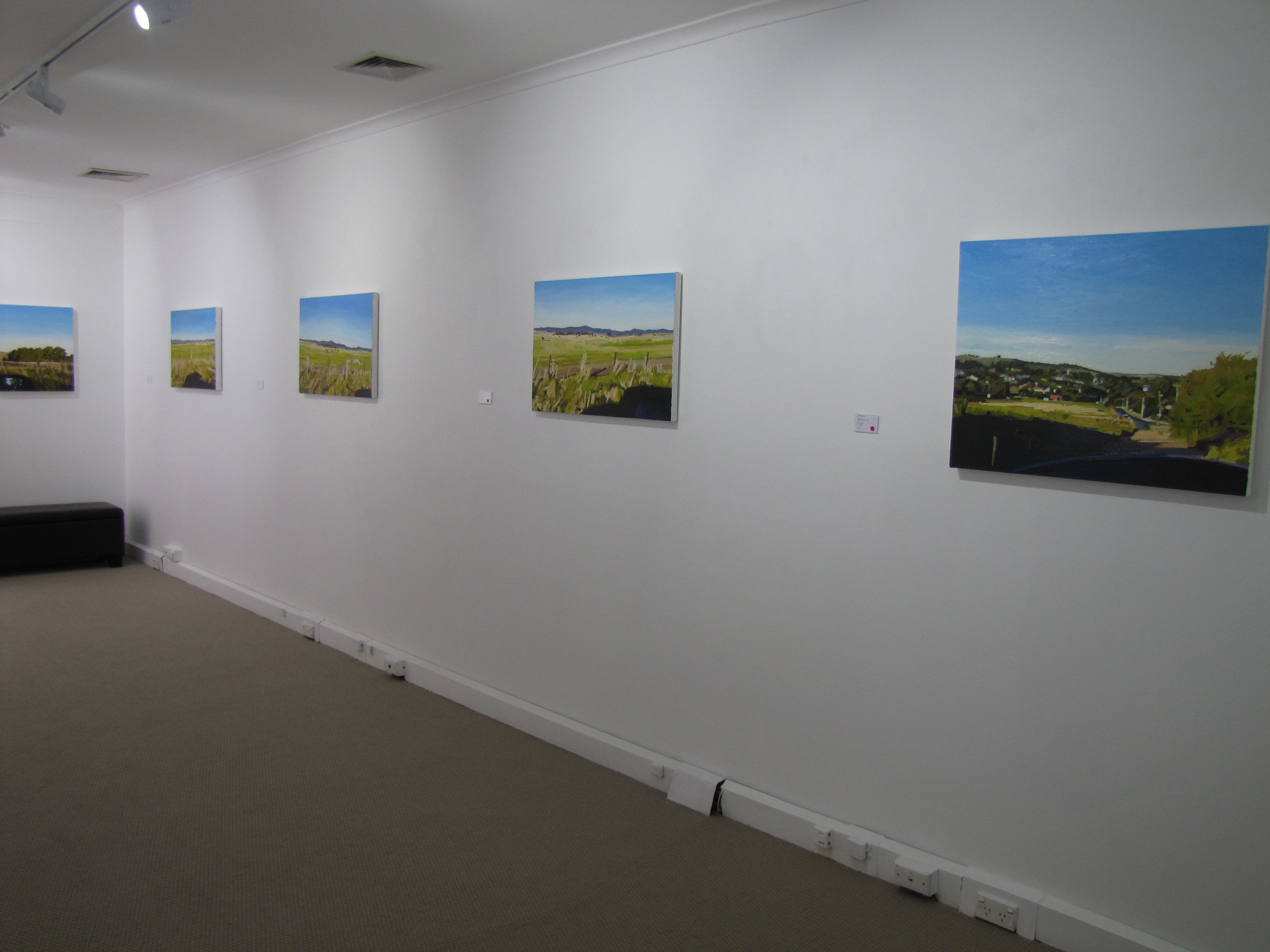
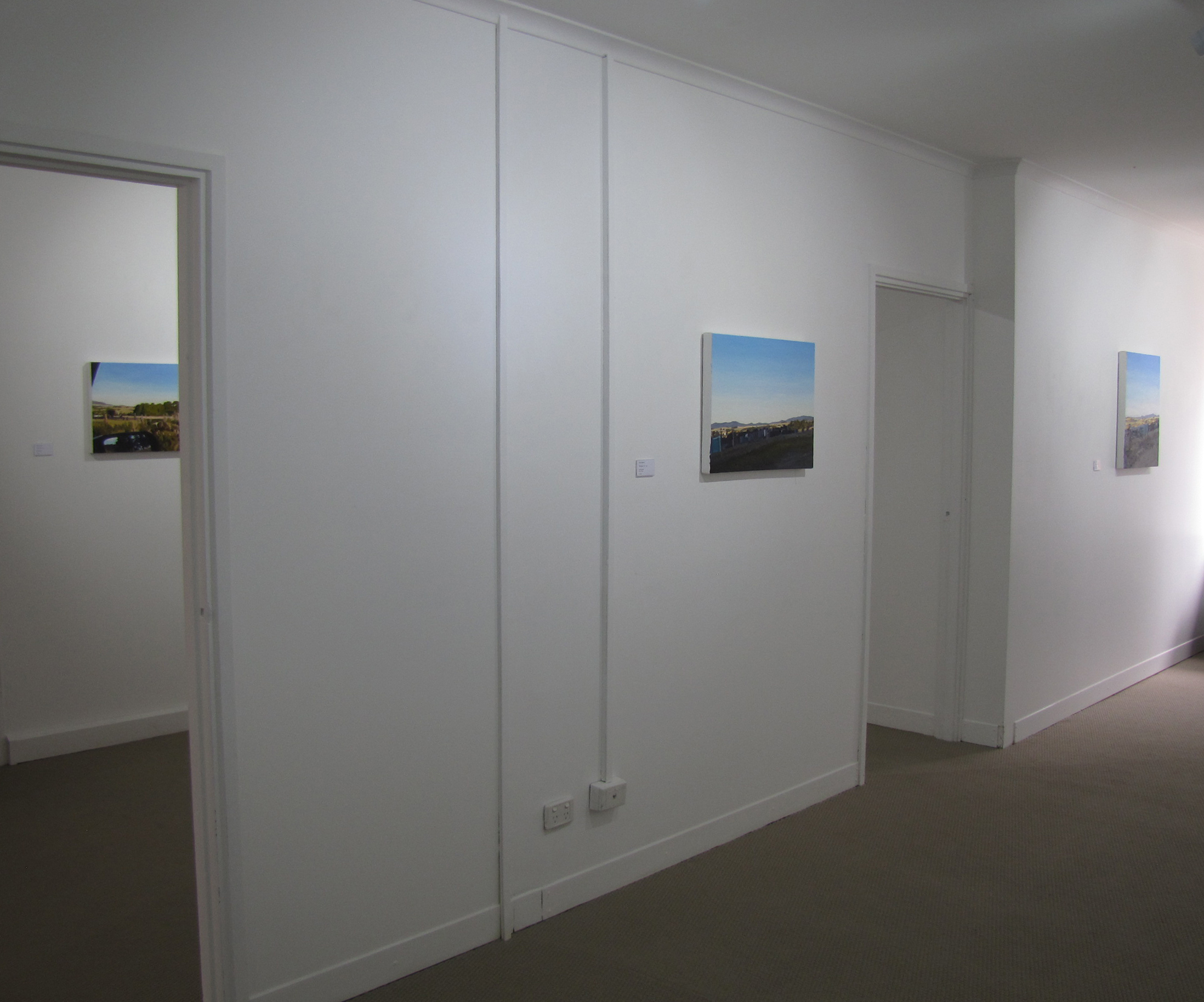
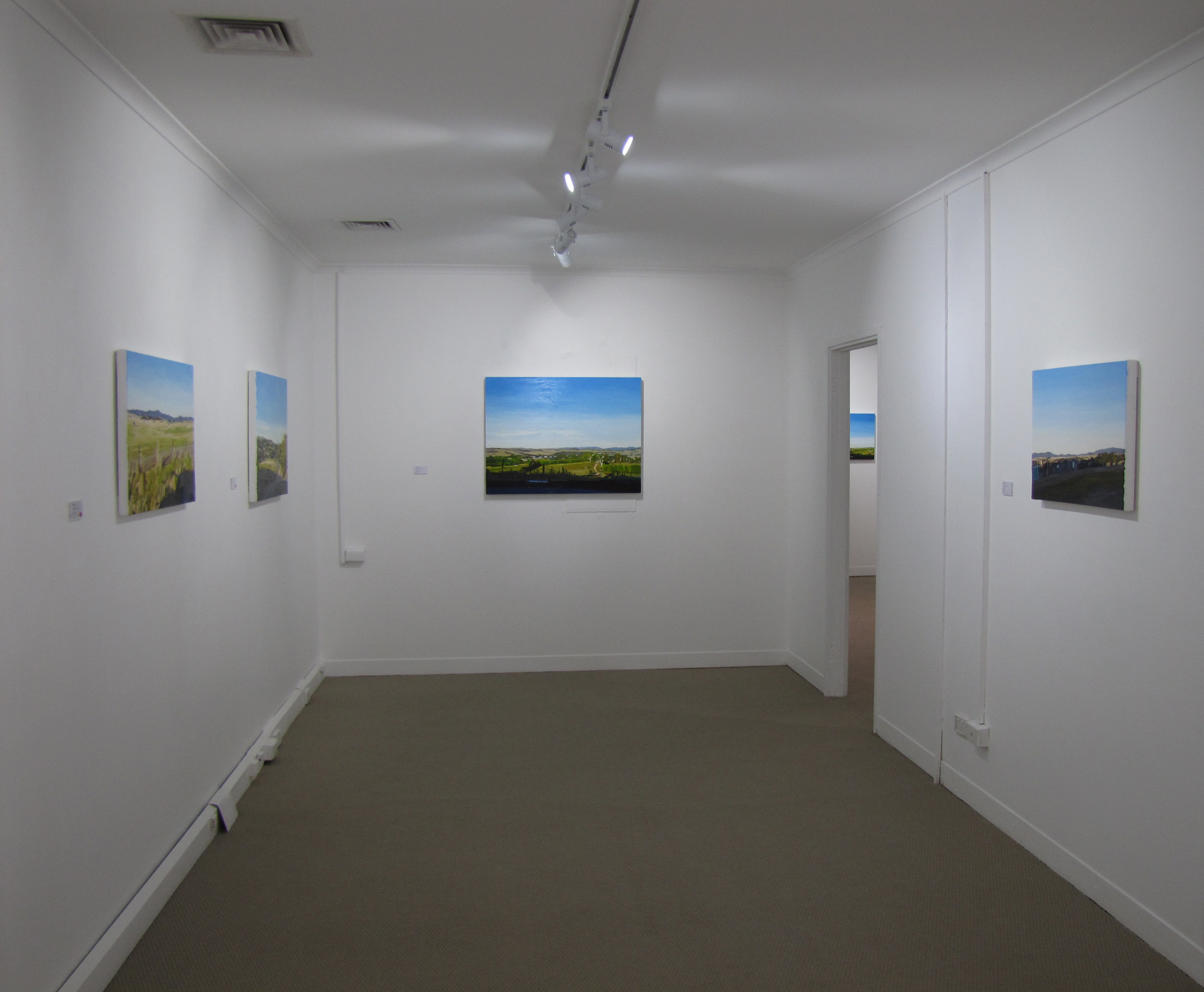

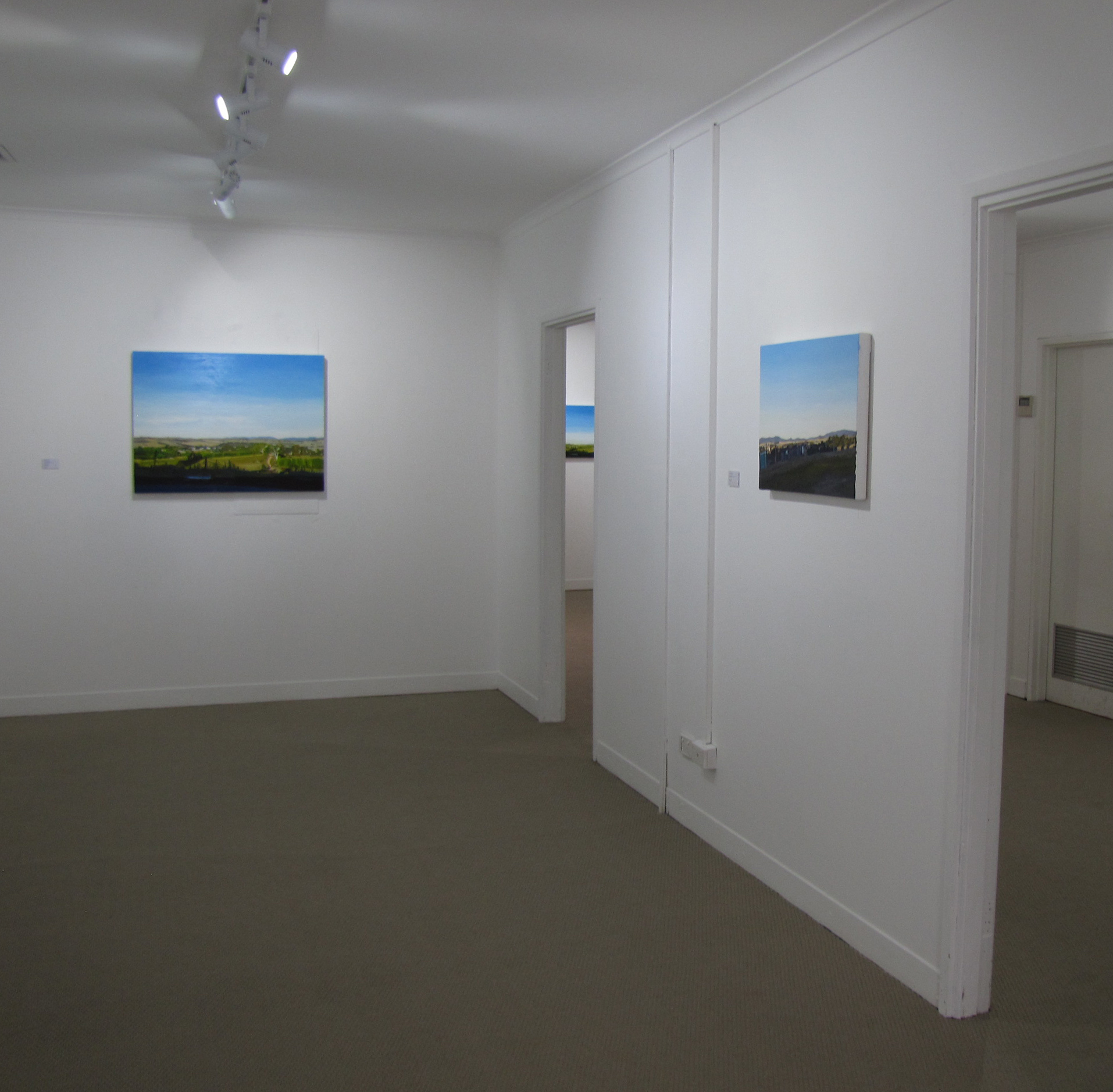
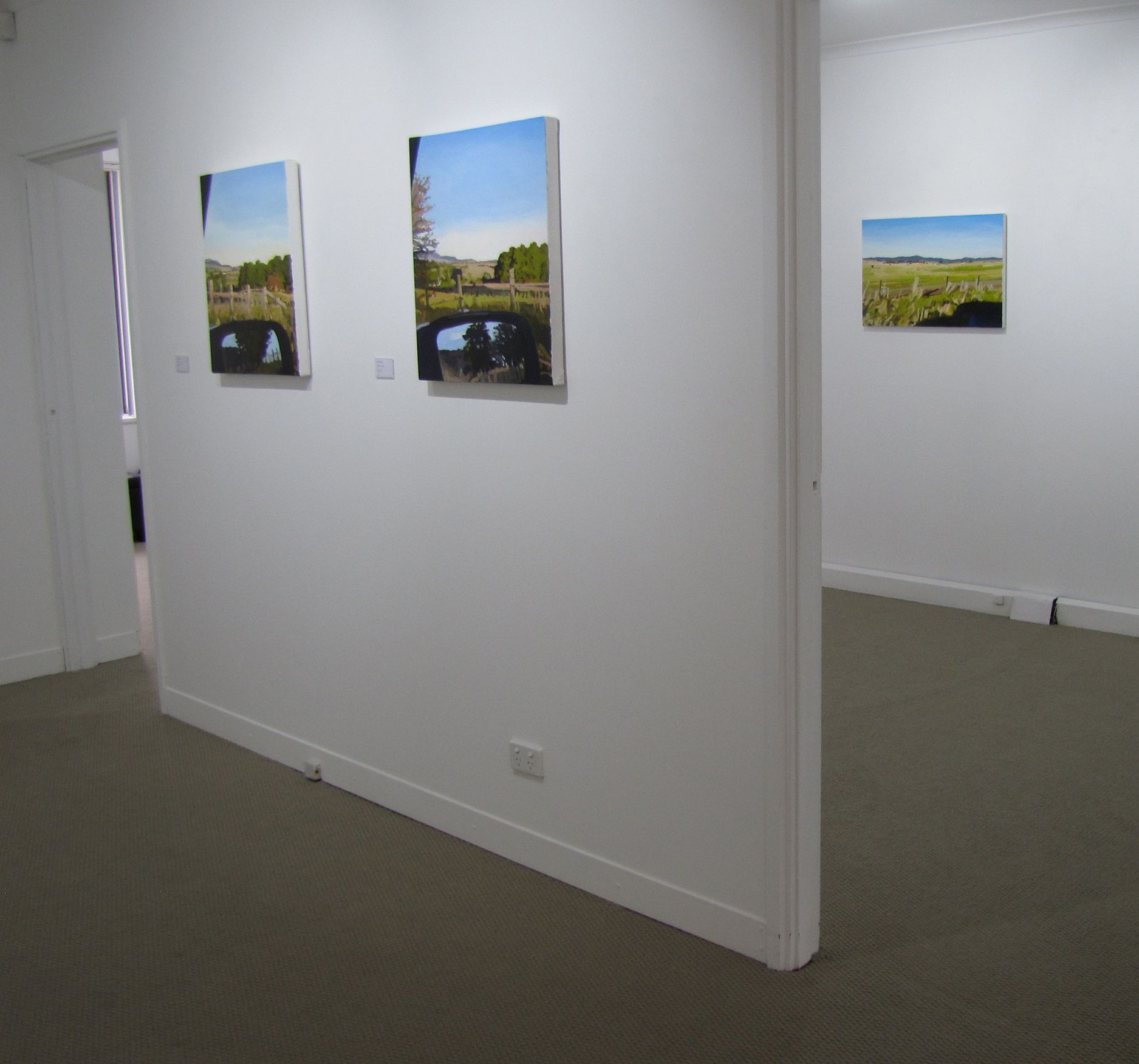
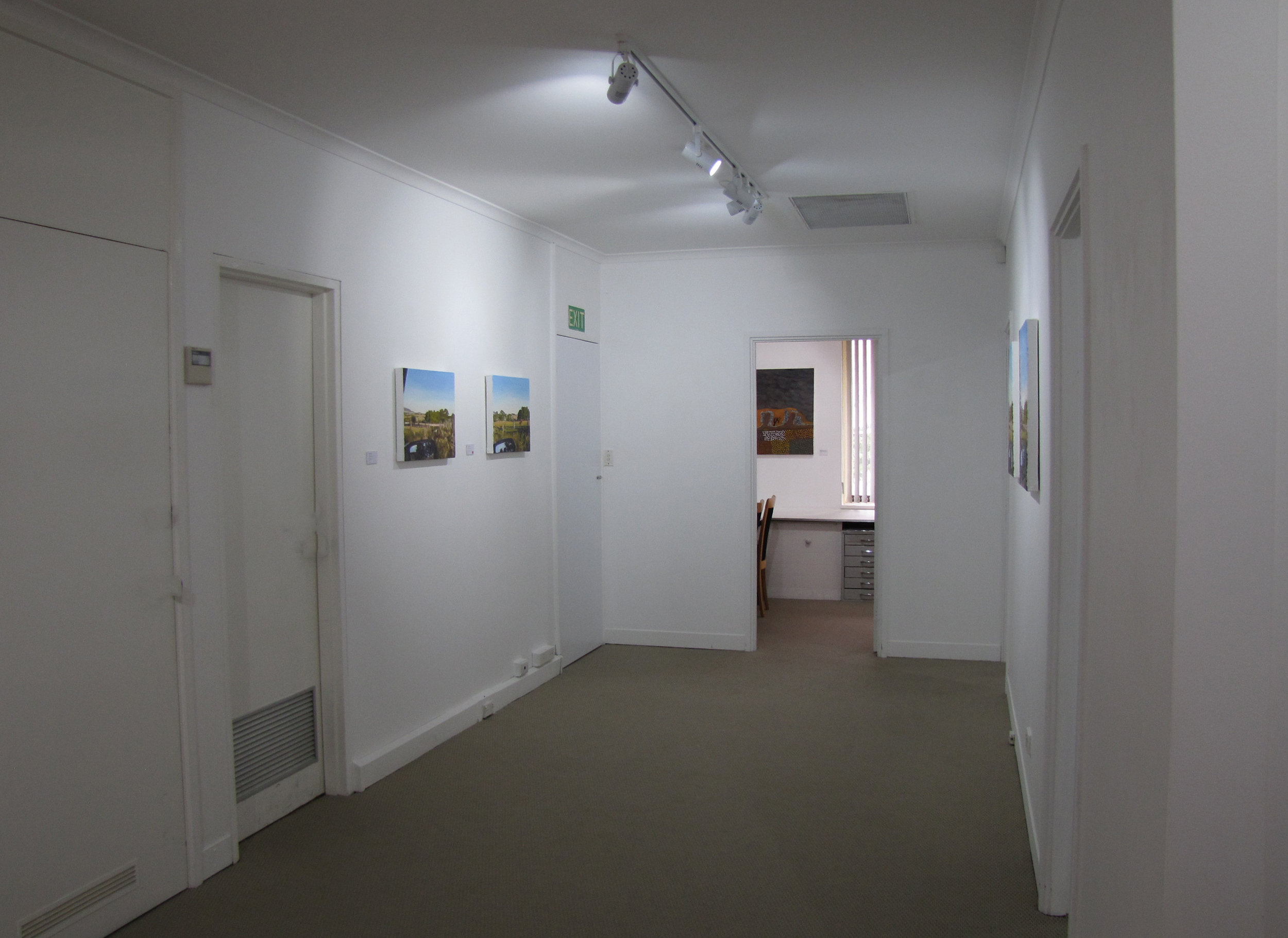
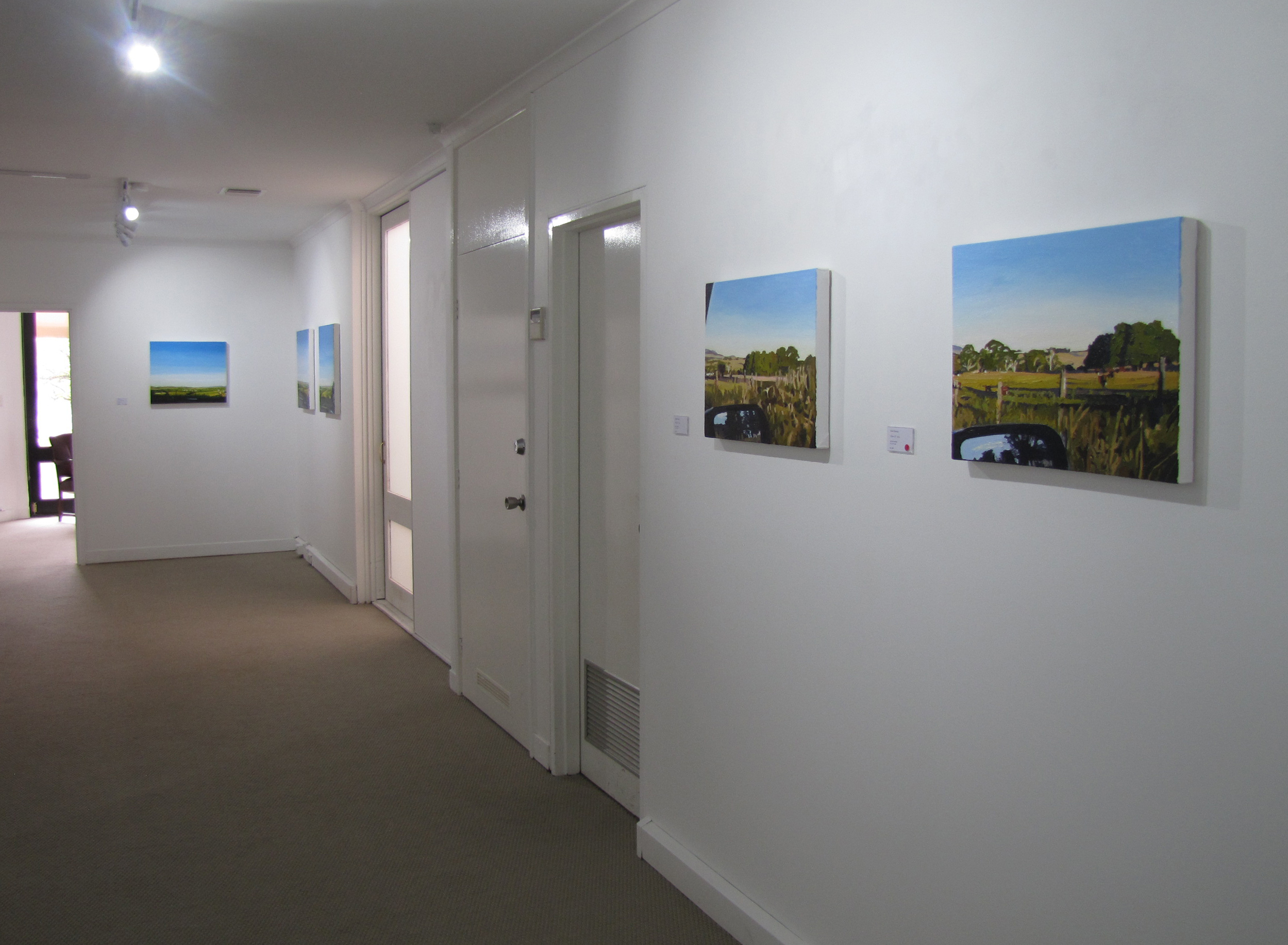
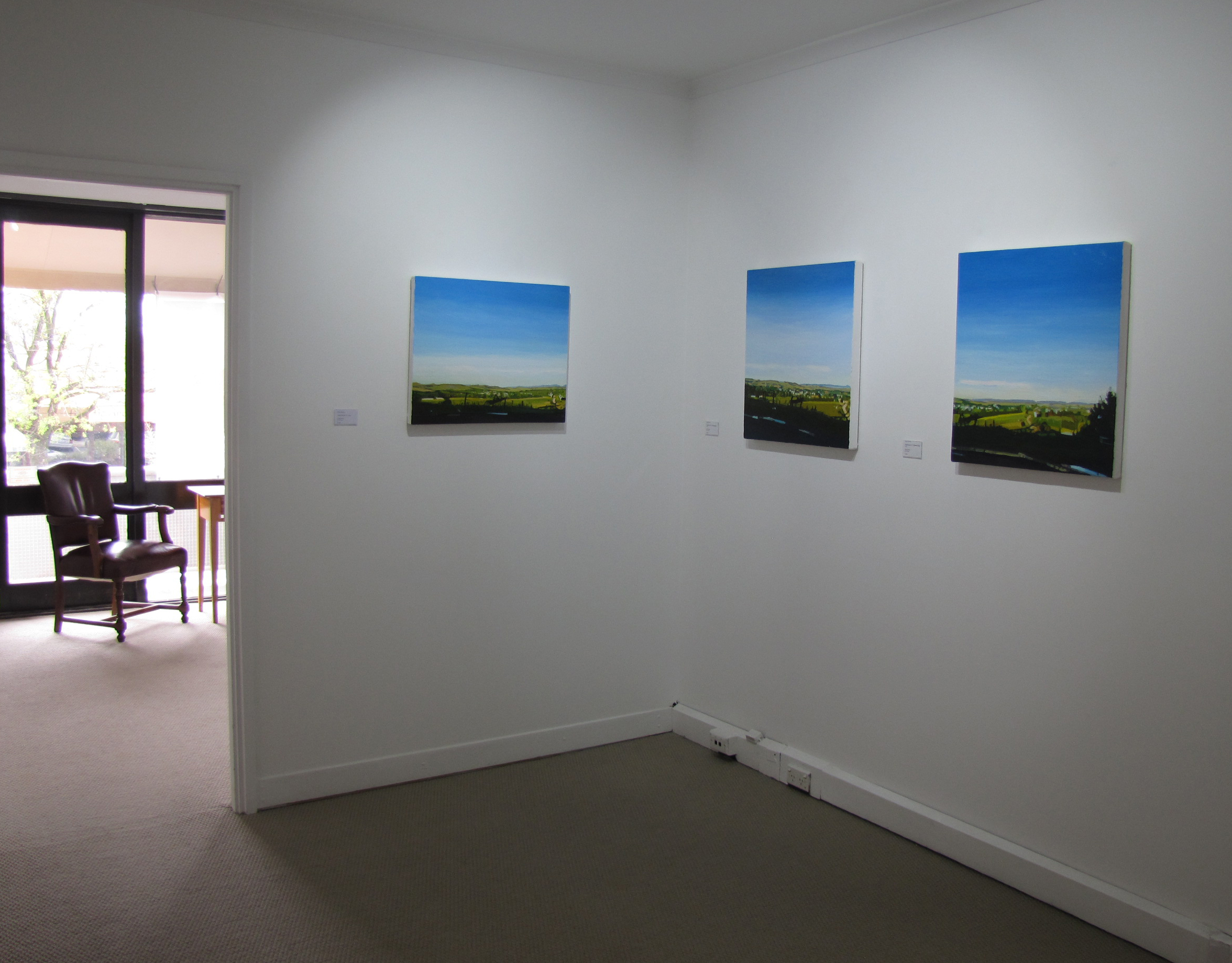
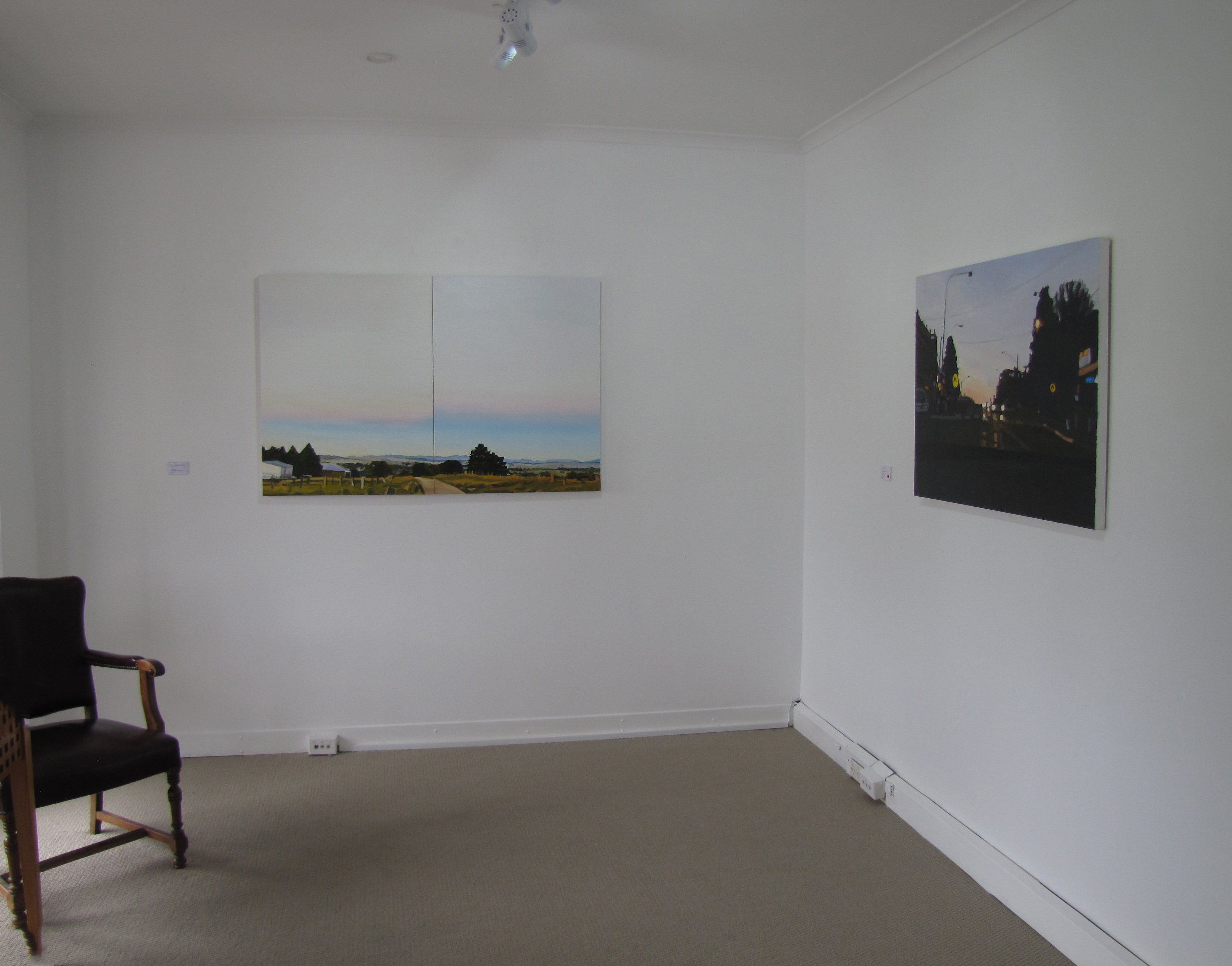
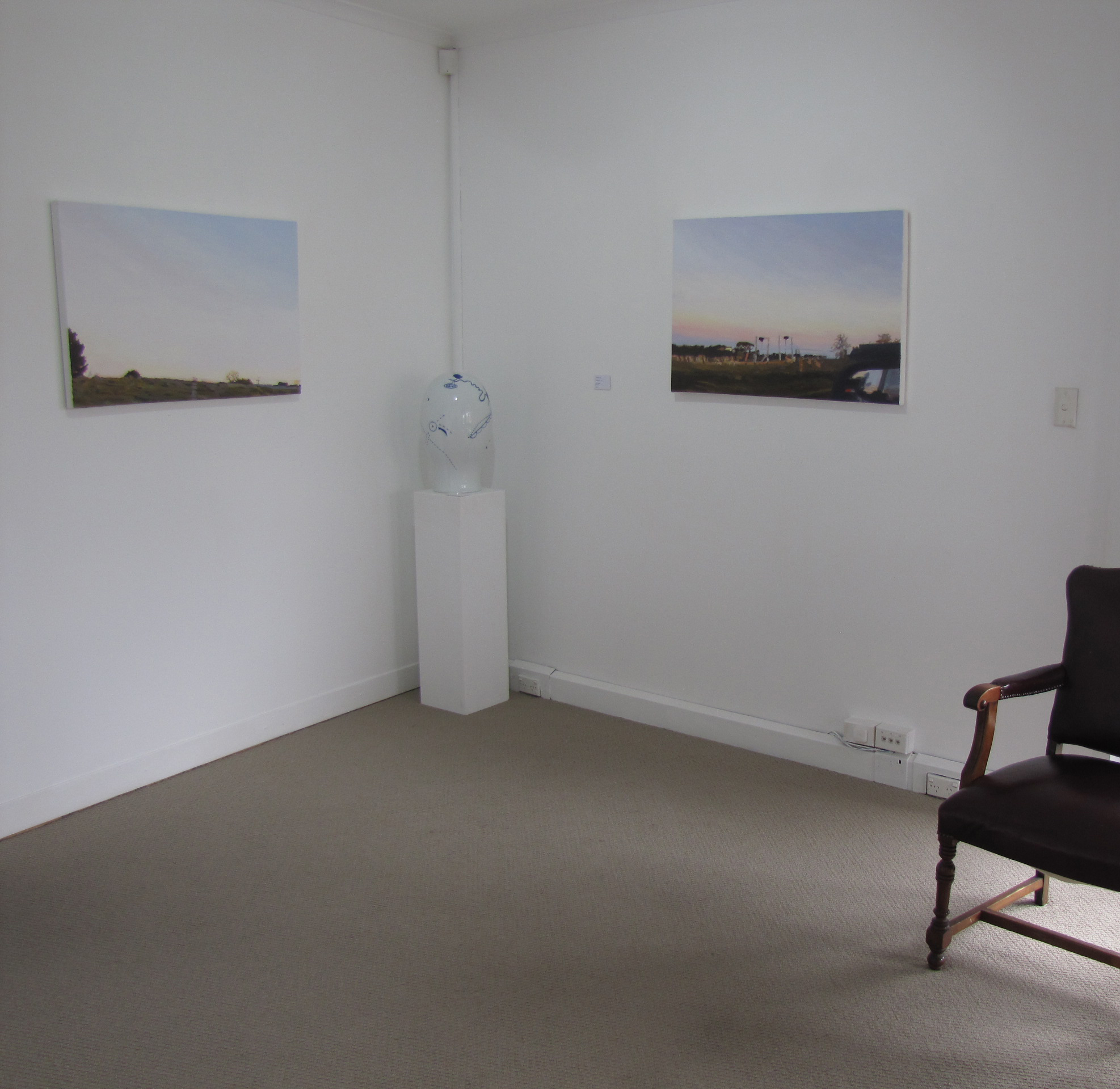
Extracts of Reviews and writings
Yolande Norris on Kate Stevens
We consume hours of imagery each day, the majority of it virtual, subject to numerous filters and reaching us via a complex series of algorithms that ensures we see only ‘the most’: the most shocking, the most endearing, most tear-jerking and most awe-inspiring.
The origins of these images are not important, and who took them has been rendered irrelevant. There is little pause to consider whether or not they are real and true or in some way doctored and enhanced. Consumed at great speed in scrolling swathes, disjointed and erratic, our reactions slacken. In this homogenisation we disengage, glaze over, cease to feel, to be moved. Besides, how do you process images of someone’s breakfast next to images of war?
Behind all this, the sights of our immediate everyday, our familiar surroundings, exist only as the scenery in which we wait for something to happen. We believe that what is worth seeing is not our own, and so swarm towards ‘ordained’ spectacles elsewhere; via planes, trains, at the end of long hikes – arriving at the same destination to take the same photo, adding it to the virtual pile, while none of the journey mattered or was captured. Despite the billions of images in the public realm, available on a moment’s whim, there persists a desire for ownership or possession via image-making, the acknowledgement that ‘I was here’ – and somewhere out there I have a picture to prove it.
Kate Stevens’ painting is heavily informed by the image scramble of Instagram, Pinterest and other emergent share platforms, but increasingly, amongst this inundation, it is the places and sights of the in-between spaces, of the journeys, that demand her attention.
Returning to the adage ‘paint what you know’, Stevens followed her growing compulsion away from iconographic sights towards the views around her regional hometown. A return to what is real and true, what is personal.
It is these surroundings close at hand that we know best, but don’t know we know - the motifs of the familiar. We see them every day in all weather, tumbling from our different homes and various warm beds into cars, funneling onto the same roads, peering out various car windows with our minds elsewhere.
Stevens contributes to the tradition of Australian landscape painting while remaining upfront as to the manner in which we commonly encounter it – the occasional bush walk but mostly via long stretches of highway, in incidental snatches on the way to somewhere else. Here the windows and mirrors are both filter and frame. Within the car we inhabit an intimate space, nestled within a vast landscape. In homage to our daily travels Stevens evokes the commuter sublime.
Exposing the process, of ‘getting there rather than being there’, resonates with Stevens’ approach to art-making overall, and there is plentiful evidence within these works of her presence, both physically and materially. Painting, too, is an attempt at possession. To document both place and headspace; the feeling of being in that moment, to deeply understand a fleeting subject; each particular line of trees, each horizon scored by a particular mountain range, the dip of the hills just so. It is a quest to pin down the colour and light that drenches our experience – the yellow of our mornings and the purple of our evenings, ceilings of blue between, casting our minds back to days and nights innumerable.



